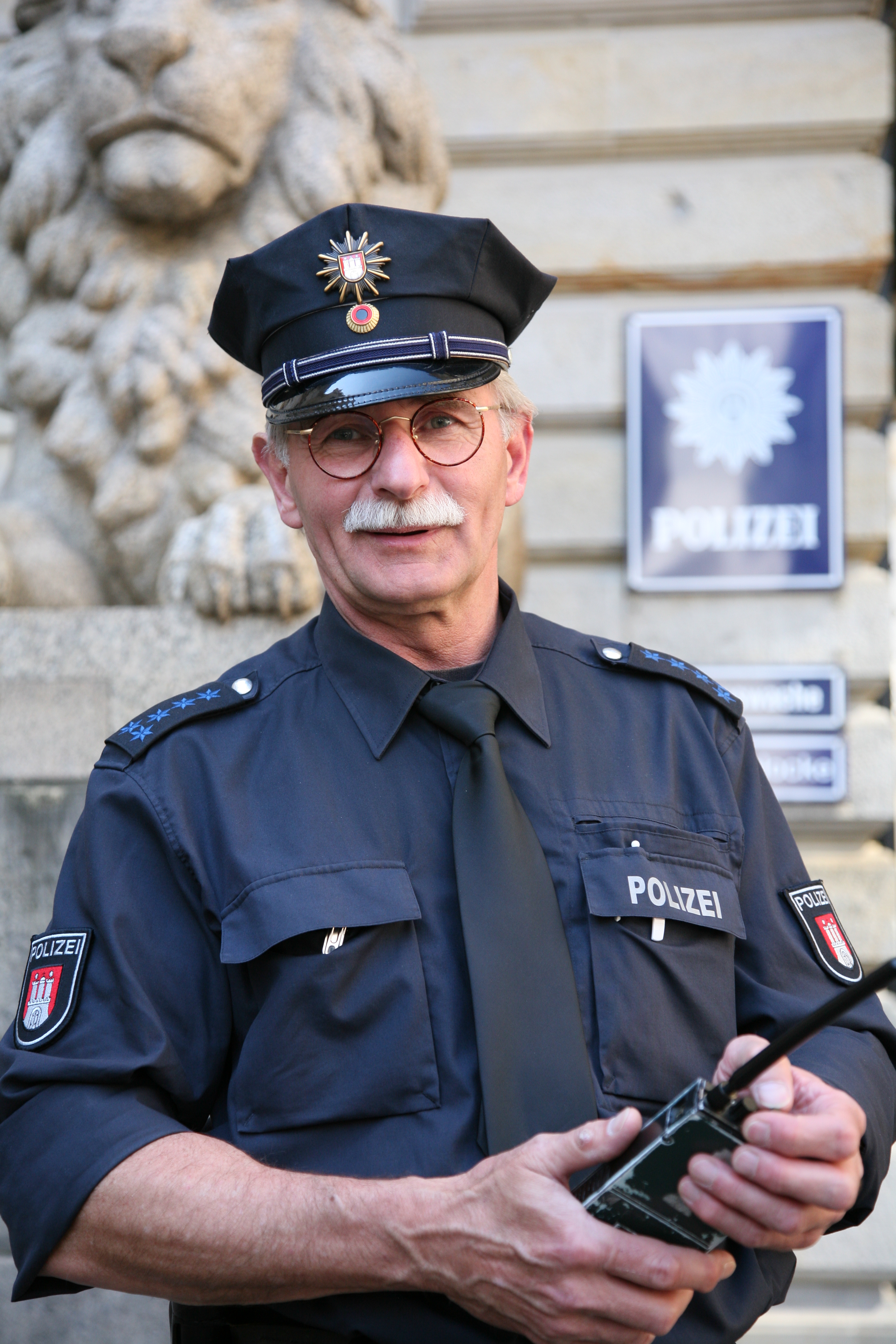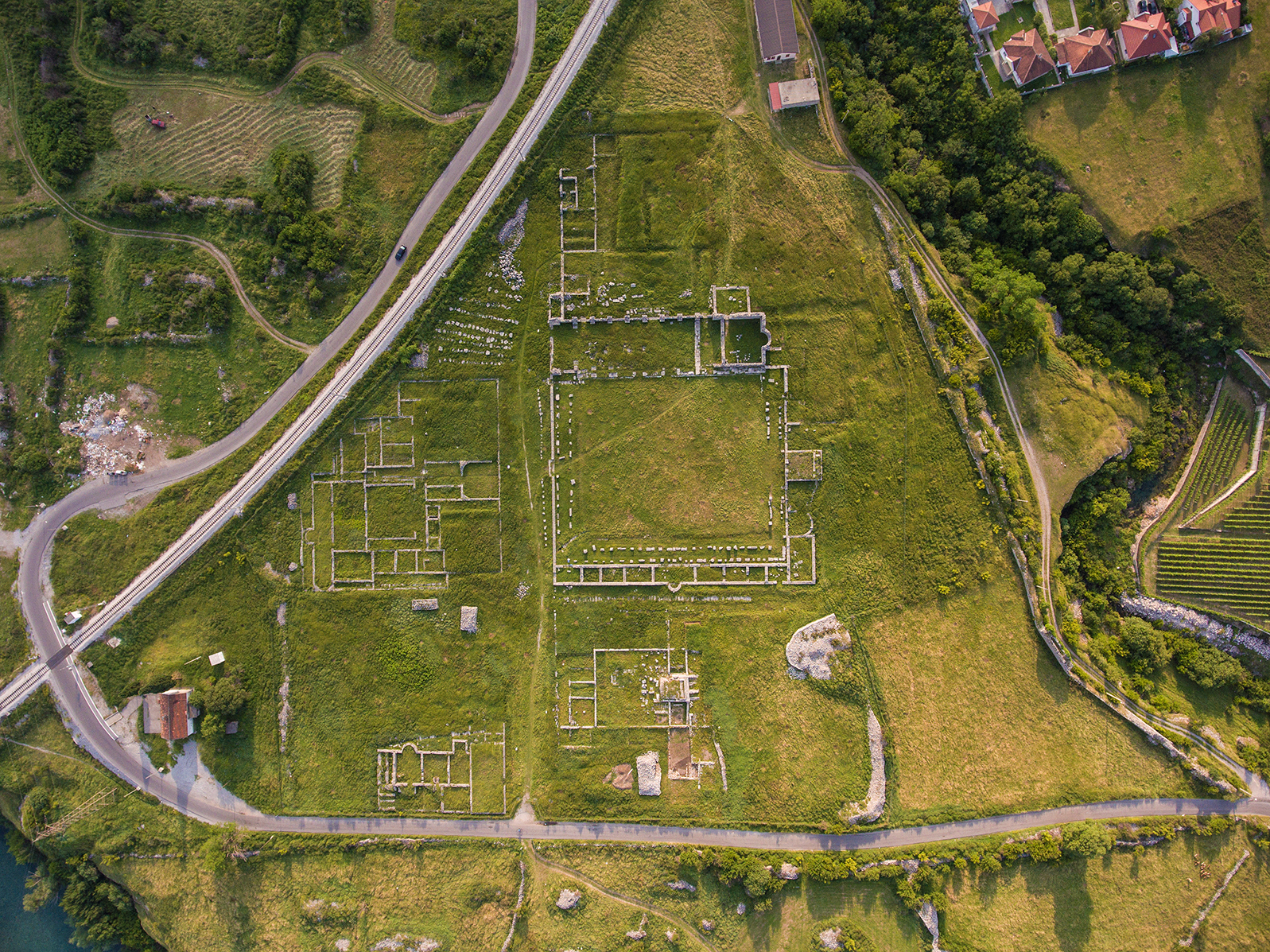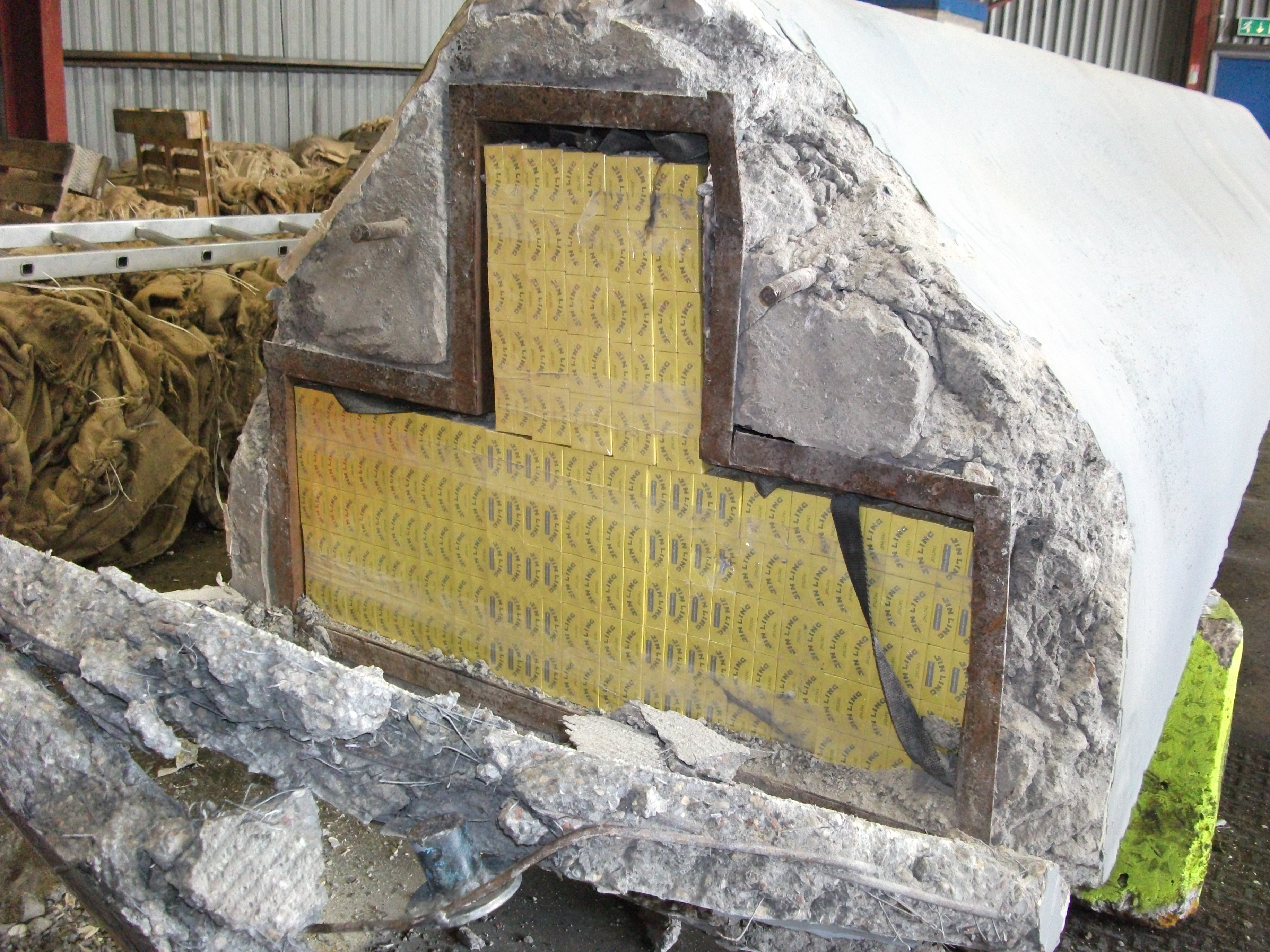|
Crime In Montenegro
Crime in Montenegro is combated by the Montenegro Police and other agencies. Crime by type Murder In 2012, Montenegro had a murder rate of 2.7 per 100,000 population. There were a total of 17 murders in Montenegro in 2012. Organised crime The Montenegrin Mafia or Montenegrin Cartel are terms used for the various criminal organizations based in Montenegro or composed of Montenegrins. There are 700 documented organized criminals operating within Montenegro; outside of the country Montenegrin gangs are active throughout Europe-notably Serbia and Slovenia. The gangs tend to specialize in cigarette smuggling, narcotics and arms trafficking. Human trafficking Montenegro is a transit, source, and destination country for men, women, and girls who are subjected to trafficking in persons, specifically conditions of forced prostitution and forced labor. Trafficking victims are mostly females from Ukraine, Moldova, Serbia, Albania, and Kosovo, who migrate or are smuggled throug ... [...More Info...] [...Related Items...] OR: [Wikipedia] [Google] [Baidu] |
Police Car Of Montenegro 01
The police are a constituted body of persons empowered by a state, with the aim to enforce the law, to ensure the safety, health and possessions of citizens, and to prevent crime and civil disorder. Their lawful powers include arrest and the use of force legitimized by the state via the monopoly on violence. The term is most commonly associated with the police forces of a sovereign state that are authorized to exercise the police power of that state within a defined legal or territorial area of responsibility. Police forces are often defined as being separate from the military and other organizations involved in the defense of the state against foreign aggressors; however, gendarmerie are military units charged with civil policing. Police forces are usually public sector services, funded through taxes. Law enforcement is only part of policing activity. Policing has included an array of activities in different situations, but the predominant ones are concerned with the pres ... [...More Info...] [...Related Items...] OR: [Wikipedia] [Google] [Baidu] |
Law Enforcement In Montenegro
Law enforcement in Montenegro is primarily the responsibility of the ''Police Directorate'' (''Uprava Policije''). Organization All units of the Police Directorate report to the Police Director. Police Directorate of Montenegro is a law enforcement agency under the jurisdiction of Ministry of Interior. Ministry maintains direct control over internal affairs, issuance of personal documents for Montenegrin citizens (ID, drivers licence and passport), emergency situations management, human resources, financial and budgetary management of Police Directorate. Thus, regarding law enforcement matters, the role of the Minister of the Interior is supervisory, and he has no operational authority over police officers. National level On a national level, Police Directorate organized into 5 departments, which are main operational units of police, each headed by Deputy Police Director, while 3 sections and 4 units serve in a support and administrative tasks: * General Authority Police Depar ... [...More Info...] [...Related Items...] OR: [Wikipedia] [Google] [Baidu] |
Montenegro
) , image_map = Europe-Montenegro.svg , map_caption = , image_map2 = , capital = Podgorica , coordinates = , largest_city = capital , official_languages = Montenegrin , languages2_type = Languages in official use , languages2 = , ethnic_groups = , ethnic_groups_year = 2011 , religion = , religion_year = 2011 , demonym = Montenegrin , government_type = Unitary parliamentary republic , leader_title1 = President , leader_name1 = Milo Đukanović , leader_title2 = Prime Minister , leader_name2 = Dritan Abazović (acting) , leader_title3 = Speaker , leader_name3 = Danijela Đurović , legislature = Skupština , sovereignty_type = Establishment history , established_event1 = Principality of Duklja , established_date ... [...More Info...] [...Related Items...] OR: [Wikipedia] [Google] [Baidu] |
Montenegrins (ethnic Group)
Montenegrins ( cnr, Црногорци, Crnogorci, or ; lit. "Black Mountain People") are a South Slavic ethnic group that share a common Montenegrin culture, history, and language, identified with the country of Montenegro. Genetics According to one triple analysis – autosomal, mitochondrial and paternal — of available data from large-scale studies on Balto-Slavs and their proximal populations, the whole genome SNP data situates Montenegrins with Serbs in between two Balkan clusters. According to a 2020 autosomal marker analysis, Montenegrins are situated in-between Serbians and Kosovo Albanians. Y-DNA genetic study done in 2010 on 404 male individuals from Montenegro gave the following results: haplogroup I2a (29.7%), E-V13 (26.9%), R1b (9.4%), R1a (7.6%), I1 (6.1%), J2a1 (4.7%), J2b (4.4%), G2a (2.4%), Q (1.9%), I2b (1.7%), N (1.4%), H (1.4%), L (1.2%), and J1 (0.49%). A 2022 study on 267 samples from northeastern Montenegro found that the "most common ... [...More Info...] [...Related Items...] OR: [Wikipedia] [Google] [Baidu] |
Europe
Europe is a large peninsula conventionally considered a continent in its own right because of its great physical size and the weight of its history and traditions. Europe is also considered a subcontinent of Eurasia and it is located entirely in the Northern Hemisphere and mostly in the Eastern Hemisphere. Comprising the westernmost peninsulas of Eurasia, it shares the continental landmass of Afro-Eurasia with both Africa and Asia. It is bordered by the Arctic Ocean to the north, the Atlantic Ocean to the west, the Mediterranean Sea to the south and Asia to the east. Europe is commonly considered to be separated from Asia by the watershed of the Ural Mountains, the Ural River, the Caspian Sea, the Greater Caucasus, the Black Sea and the waterways of the Turkish Straits. "Europe" (pp. 68–69); "Asia" (pp. 90–91): "A commonly accepted division between Asia and Europe ... is formed by the Ural Mountains, Ural River, Caspian Sea, Caucasus Mountains, and the Blac ... [...More Info...] [...Related Items...] OR: [Wikipedia] [Google] [Baidu] |
Serbia
Serbia (, ; Serbian: , , ), officially the Republic of Serbia (Serbian: , , ), is a landlocked country in Southeastern and Central Europe, situated at the crossroads of the Pannonian Basin and the Balkans. It shares land borders with Hungary to the north, Romania to the northeast, Bulgaria to the southeast, North Macedonia to the south, Croatia and Bosnia and Herzegovina to the west, and Montenegro to the southwest, and claims a border with Albania through the Political status of Kosovo, disputed territory of Kosovo. Serbia without Kosovo has about 6.7 million inhabitants, about 8.4 million if Kosvo is included. Its capital Belgrade is also the List of cities in Serbia, largest city. Continuously inhabited since the Paleolithic Age, the territory of modern-day Serbia faced Slavs#Migrations, Slavic migrations in the 6th century, establishing several regional Principality of Serbia (early medieval), states in the early Middle Ages at times recognised as tributaries to the B ... [...More Info...] [...Related Items...] OR: [Wikipedia] [Google] [Baidu] |
Slovenia
Slovenia ( ; sl, Slovenija ), officially the Republic of Slovenia (Slovene: , abbr.: ''RS''), is a country in Central Europe. It is bordered by Italy to the west, Austria to the north, Hungary to the northeast, Croatia to the southeast, and the Adriatic Sea to the southwest. Slovenia is mostly mountainous and forested, covers , and has a population of 2.1 million (2,108,708 people). Slovenes constitute over 80% of the country's population. Slovene, a South Slavic language, is the official language. Slovenia has a predominantly temperate continental climate, with the exception of the Slovene Littoral and the Julian Alps. A sub-mediterranean climate reaches to the northern extensions of the Dinaric Alps that traverse the country in a northwest–southeast direction. The Julian Alps in the northwest have an alpine climate. Toward the northeastern Pannonian Basin, a continental climate is more pronounced. Ljubljana, the capital and largest city of Slovenia, is geogra ... [...More Info...] [...Related Items...] OR: [Wikipedia] [Google] [Baidu] |
Cigarette Smuggling
The illicit cigarette trade is defined as “the production, import, export, purchase, sale, or possession of tobacco goods which fail to comply with legislation” (FATF 2012). Illicit cigarette trade activities fall under 3 categories: # Contraband: cigarettes smuggled from abroad without domestic duty paid; # Counterfeit: cigarettes manufactured without authorization of the rightful owners, with intent to deceive consumers and to avoid paying duty; # Illicit whites: brands manufactured legitimately in one country, but smuggled and sold in another without duties being paid. Cigarette smuggling, also informally referred to as "buttlegging," is the illicit transportation of cigarettes or cigars from an administrative division with low taxation to a division with high taxation for sale and consumption. The practice, commonly used by the tobacco industry, organized crime syndicates and rebel groups, is a form of tax evasion. Interstate 95, a highway traversing the East Coast o ... [...More Info...] [...Related Items...] OR: [Wikipedia] [Google] [Baidu] |
Narcotics
The term narcotic (, from ancient Greek ναρκῶ ''narkō'', "to make numb") originally referred medically to any psychoactive compound with numbing or paralyzing properties. In the United States, it has since become associated with opiates and opioids, commonly morphine and heroin, as well as derivatives of many of the compounds found within raw opium latex. The primary three are morphine, codeine, and thebaine (while thebaine itself is only very mildly psychoactive, it is a crucial precursor in the vast majority of semi-synthetic opioids, such as oxycodone or hydrocodone). Legally speaking, the term "narcotic" may be imprecisely defined and typically has negative connotations. When used in a legal context in the U.S., a narcotic drug is totally prohibited, such as heroin, or one that is used in violation of legal regulation (in this word sense, equal to any controlled substance or illicit drug). In the medical community, the term is more precisely defined and ge ... [...More Info...] [...Related Items...] OR: [Wikipedia] [Google] [Baidu] |
Arms Trafficking
Arms trafficking or gunrunning is the illicit trade of contraband small arms and ammunition, which constitutes part of a broad range of illegal activities often associated with transnational criminal organizations. The illegal trade of small arms, unlike other organized crime commodities, is more closely associated with exercising power in communities instead of achieving economic gain. Scholars estimate illegal arms transactions amount to over US$1 billion annually. To keep track of imports and exports of several of the most dangerous armament categories, the United Nations, in 1991, created a Register for Conventional Arms. Participation, however, is not compulsory, and lacks comprehensive data in regions outside of Europe. Africa, due to a prevalence of corrupt officials and loosely enforced trade regulations, is a region with extensive illicit arms activity. In a resolution to complement the Register with legally binding obligations, a Firearms Protocol was incorporated ... [...More Info...] [...Related Items...] OR: [Wikipedia] [Google] [Baidu] |
Romani People
The Romani (also spelled Romany or Rromani , ), colloquially known as the Roma, are an Indo-Aryan ethnic group, traditionally nomadic itinerants. They live in Europe and Anatolia, and have diaspora populations located worldwide, with significant concentrations in the Americas. In the English language, the Romani people are widely known by the exonym Gypsies (or Gipsies), which is considered pejorative by many Romani people due to its connotations of illegality and irregularity as well as its historical use as a racial slur. For versions (some of which are cognates) of the word in many other languages (e.g., , , it, zingaro, , and ) this perception is either very small or non-existent. At the first World Romani Congress in 1971, its attendees unanimously voted to reject the use of all exonyms for the Romani people, including ''Gypsy'', due to their aforementioned negative and stereotypical connotations. Linguistic and genetic evidence suggests that the Roma origina ... [...More Info...] [...Related Items...] OR: [Wikipedia] [Google] [Baidu] |



